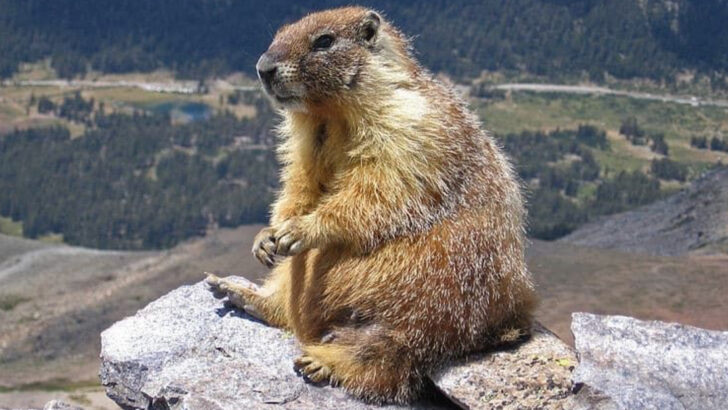Life on top of the world isn’t for the faint of heart.
The Rocky Mountains don’t coddle their residents. They freeze them. They starve them. They blast them with wind and bury their trails in snow. And yet—somehow—life thrives.
Up here, you’ll find animals that stare winter in the face and say, “Bring it.” Mountain goats balancing on cliffs like it’s nothing. Elk bugling through the cold dawn. Birds that treat thin air like an open runway.
These 19 creatures aren’t just surviving the Rockies—they’re owning every icy inch of it.
Mountain Goat
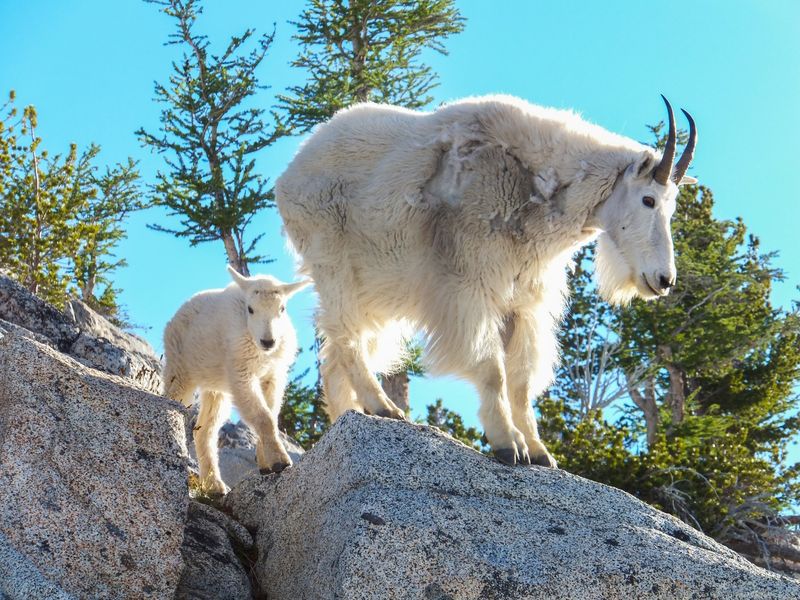
Perched on the craggy cliffs, mountain goats navigate the Rockies with grace. Their specialized hooves grip the rocky terrain, allowing them to climb steep inclines with ease. These goats have a thick white coat that provides insulation against the chilling winds.
Their diet consists mainly of grasses and herbs found in alpine meadows. During winter, they descend to lower elevations to find food. Known for their incredible agility, mountain goats often leap across gorges and cliffs, a sight that leaves hikers in awe.
Adapted to the harsh mountain climate, they thrive where few animals dare to tread.
Bighorn Sheep

Bighorn sheep are iconic inhabitants of the Rockies, known for their impressive spiral horns. These animals traverse rocky slopes with sure-footed confidence, often found in large herds.
Their social structure is fascinating, with dominant males engaging in head-butting contests during mating season. Bighorn sheep have a keen sense of balance and can leap from ledge to ledge.
They graze on grasses and shrubs, crucial to maintaining the delicate mountain ecosystem. With their tan coats blending into the rocky background, they are a symbol of survival in the high peaks.
Pika
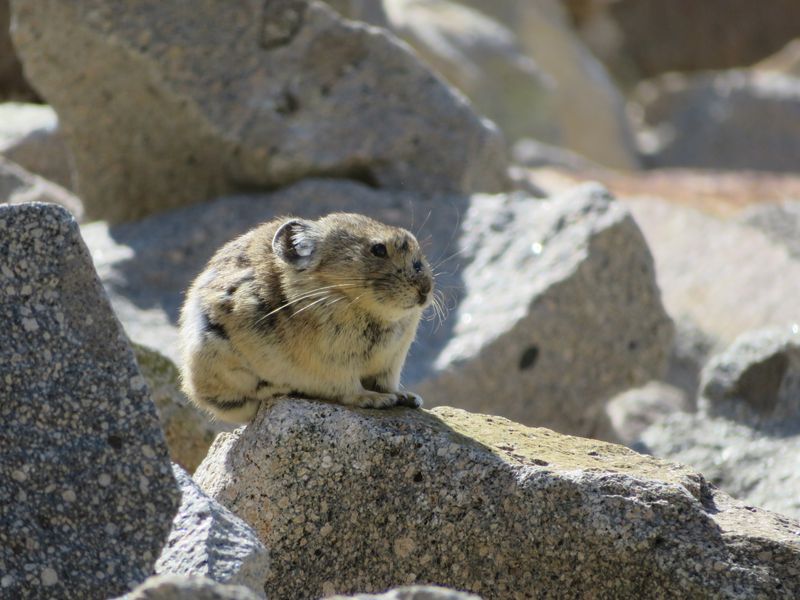
The pika might be small, but it’s a tough survivor in the Rockies. These tiny creatures are known for their distinctive squeak and are often spotted gathering hay for winter storage. Nestled among the rocks, pikas create intricate burrows to escape the cold.
They feed on grasses, sedges, and wildflowers, adapting to the short growing season. Despite their vulnerability to predators, pikas are quick and elusive, darting between rocks.
Their presence indicates a healthy alpine ecosystem, thriving where temperatures plummet and snow blankets the ground for much of the year.
Snowshoe Hare
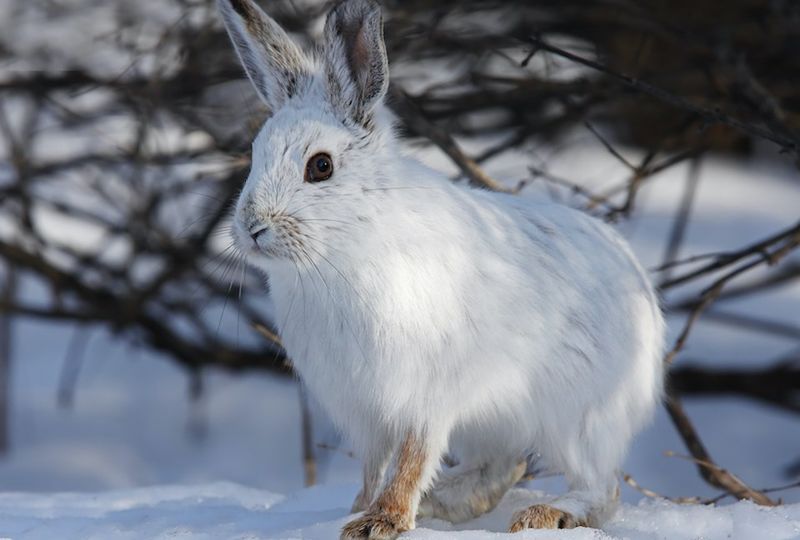
The snowshoe hare is a master of disguise, changing its coat with the seasons. In winter, its fur turns white, providing camouflage against the snow. This adaptation helps them evade predators such as lynxes and foxes.
Found in the boreal forests and alpine meadows, these hares are adept at navigating deep snow thanks to their large hind feet, which act like snowshoes. They feed on a variety of vegetation, ensuring they can survive even when food is scarce.
The snowshoe hare’s seasonal transformation is a remarkable adaptation to the harsh mountain climate.
Marmot
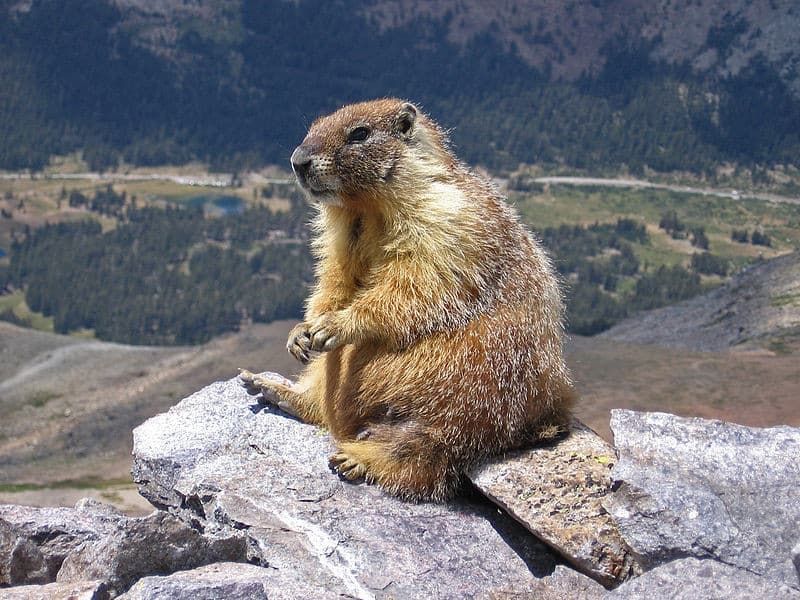
Marmots are the Rockies’ expert hibernators. These large, burly rodents spend months in a deep sleep to survive the harsh winter. Found in colonies, marmots communicate with high-pitched whistles, warning each other of danger.
They feed on grasses and flowers during the short summer months, preparing for the long hibernation. Marmots are often spotted basking on rocks, soaking up the sun.
Their ability to withstand the freezing temperatures of the Rocky peaks is a testament to their adaptability and survival skills in these rugged environments.
Golden Eagle
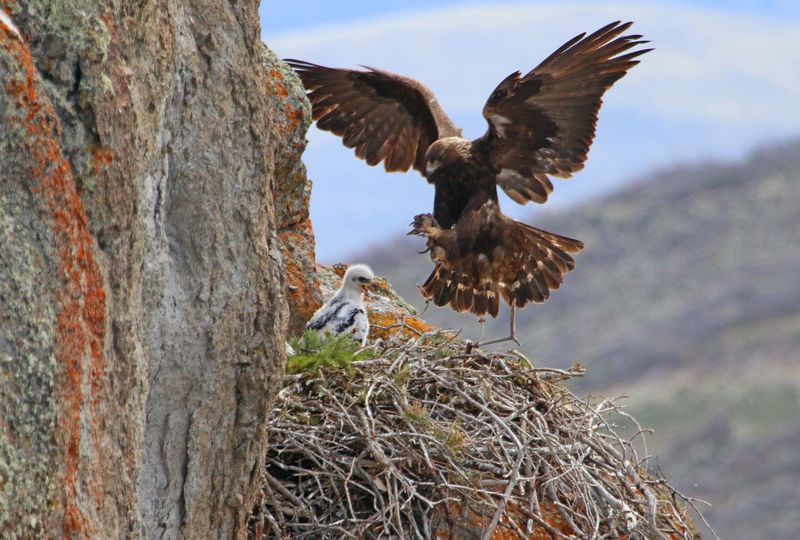
The golden eagle rules the skies over the Rockies with its powerful wings and keen eyesight. These majestic birds prey on small mammals, using their speed and agility to hunt with precision.
Golden eagles are often seen gliding effortlessly over the mountain peaks. Nesting on cliffs, they have a commanding view of their territory. The golden eagle’s presence is a sign of a healthy ecosystem, and their hunting prowess is unmatched in these high altitudes.
With a wingspan that can exceed seven feet, they are formidable predators of the Rocky Mountains.
White-tailed Deer
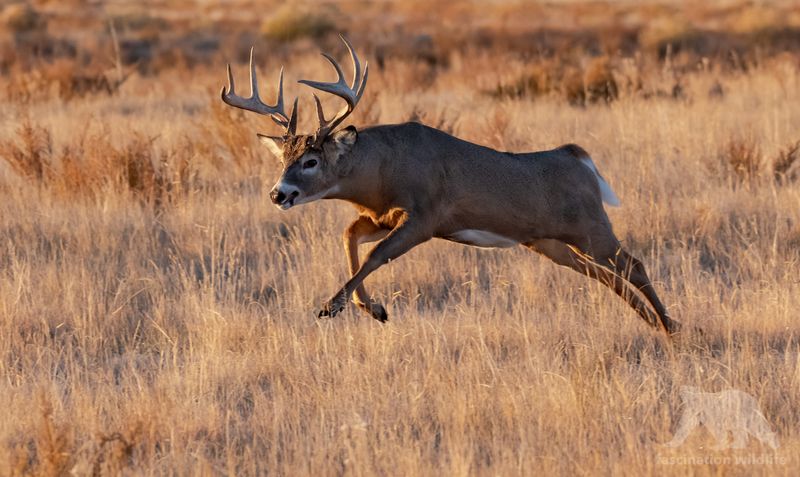
The White-tailed Deer, a symbol of grace and agility, is often seen bounding elegantly across the snow-laden slopes of the Rockies. Its keen senses help it detect danger, making it a master of survival in the wild. With each leap, the deer cuts a striking figure against the pristine snow.
Adapting to the seasonal shifts, these deer migrate to lower elevations during harsh winters, showcasing their instinctual knack for survival. Their presence, though quiet, has a profound impact on the mountain ecosystem, promoting vegetation growth through their grazing habits.
A sighting of a White-tailed Deer, with its iconic snowy tail held high, is a moment of serene beauty amidst the rugged wilderness.
Clark’s Nutcracker
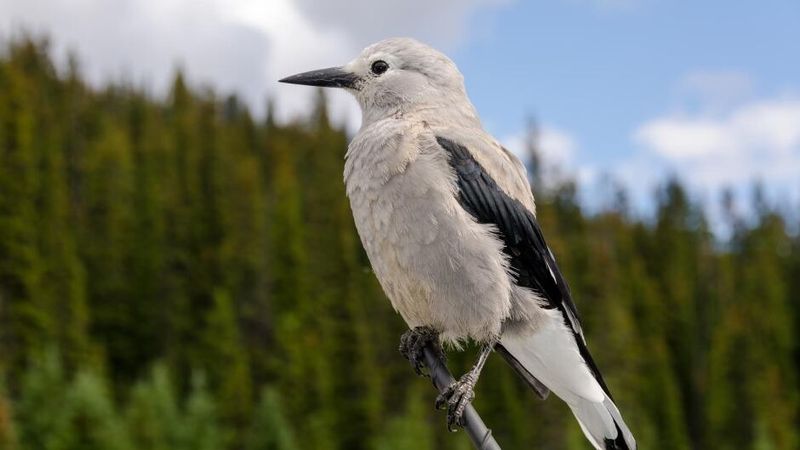
Clark’s nutcracker is a bird with a knack for memory, storing thousands of pine seeds for winter. These intelligent birds are vital to the pine forest ecosystems of the Rockies, helping to disperse seeds and promote tree growth.
They thrive in the high-altitude woodlands, using their strong beaks to crack open cones. The nutcracker’s social behavior is fascinating, often working in pairs to collect and store food.
Their adaptability and resourcefulness make them well-suited to the challenges of mountain living, proving that brains and brawn are key to survival in the Rockies.
Lynx
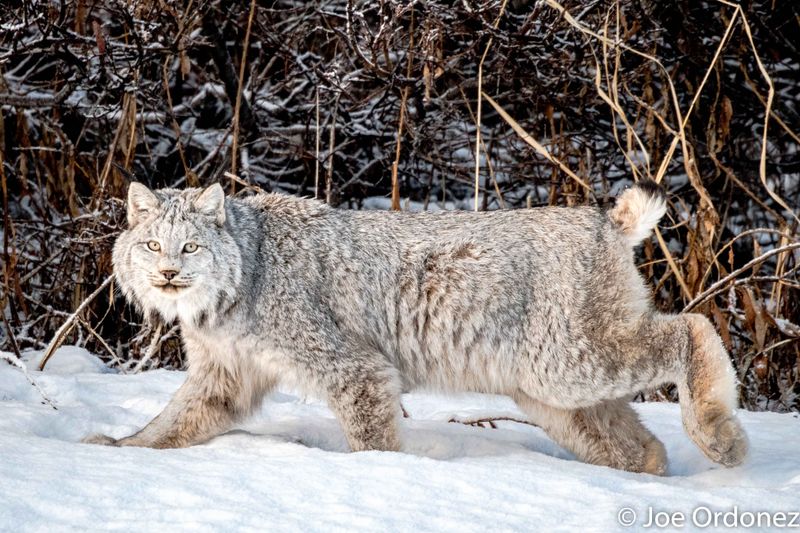
The lynx, with its tufted ears and large paws, is a stealthy predator of the Rockies. Known for their elusive nature, lynxes are rarely seen, blending seamlessly into the snowy landscape. They primarily hunt snowshoe hares, relying on their keen senses to track prey.
Lynxes are solitary animals, marking their territory in remote areas. Their thick fur provides insulation against the frigid temperatures, making them well-adapted to life in the high altitudes.
The lynx is a symbol of the wild, untamed beauty of the Rocky Mountains, an apex predator in this rugged terrain.
Ptarmigan

The ptarmigan is a master of disguise, changing its plumage with the seasons. In winter, it dons a white coat to blend into the snowy backdrop, while in summer, its feathers turn brown to match the earth.
Ptarmigans are ground-dwelling birds found in the alpine and subalpine zones. They feed on buds, berries, and insects, adapting to the scarce resources of the high peaks.
Their seasonal camouflage and ability to thrive in extreme conditions make them fascinating residents of the Rocky Mountains, embodying the resilience of mountain wildlife.
Moose
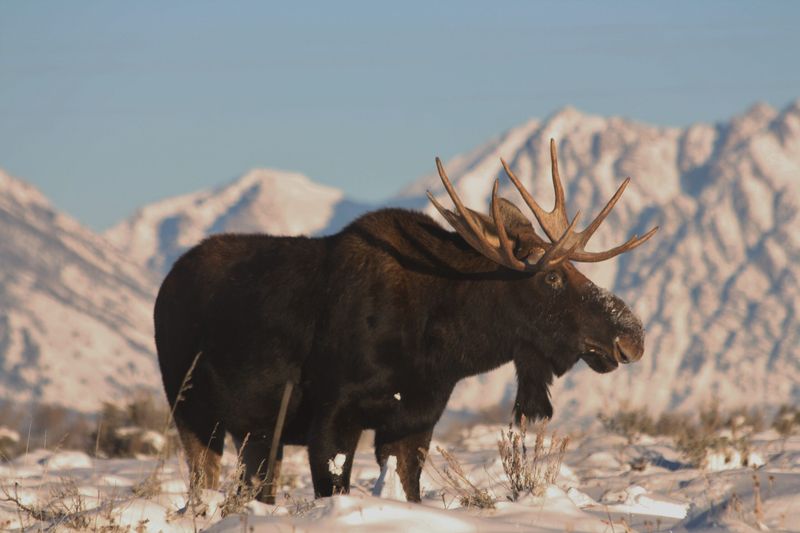
Moose are the gentle giants of the Rockies, with their impressive antlers and towering stature. These solitary animals are often found near water sources, wading through shallow streams and feeding on aquatic plants.
Moose have long legs that allow them to traverse deep snow, making them well-suited for the harsh winters. Their keen sense of smell helps them locate food buried under the snow.
Despite their size, moose are surprisingly agile and can move silently through dense forests. Their presence adds to the diverse wildlife tapestry of the Rockies.
Wolverine

The wolverine is a fierce and solitary creature, known for its tenacity and strength. These elusive animals roam the remote areas of the Rockies, scavenging for food. Wolverines have powerful jaws and sharp claws, enabling them to hunt and defend their territory.
Despite their ferocity, wolverines are shy and rarely seen. They have a thick fur coat that provides insulation against the freezing temperatures. Often traveling great distances, wolverines are symbols of endurance and resilience in the wild.
Their presence in the Rockies is a testament to the untamed spirit of this rugged landscape.
Dusky Grouse
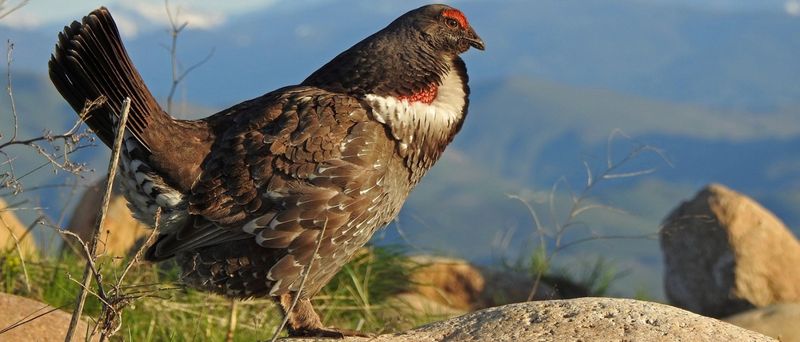
The Dusky Grouse is a striking bird of the Rockies, known for its elaborate courtship displays. Males expand their vibrant air sacs and make deep, resonating hoots to attract females. This spectacle is both a visual and auditory delight, often witnessed during springtime in the forested areas.
Adapted to the dense forests, these birds feed on a variety of plants, insects, and berries. Their cryptic coloring helps them blend into the forest floor, offering protection from predators. Observing a Dusky Grouse in full display is a reminder of the intricate dances of nature.
Did you know that the Dusky Grouse was once considered the same species as the Sooty Grouse? Their distinct habitats led to their classification as separate species. This bird continues to captivate nature enthusiasts with its unique charm.
Mountain Lion
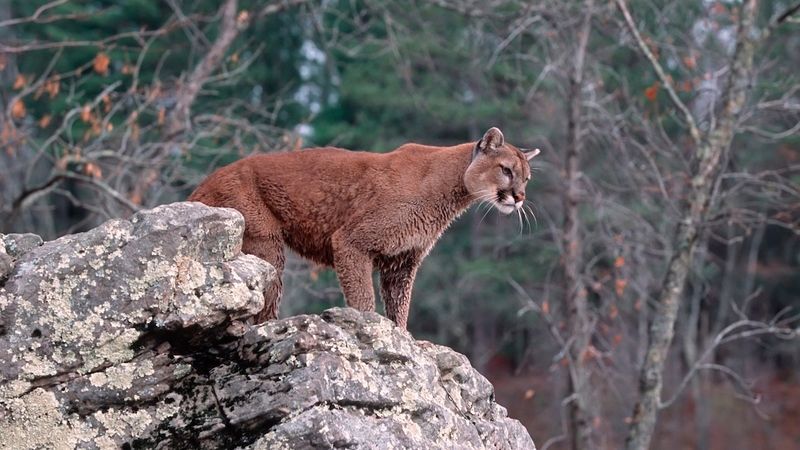
The mountain lion, or cougar, is the apex predator of the Rockies. With a sleek, muscular build, these cats are adept hunters, capable of taking down prey much larger than themselves. Their powerful hind legs enable them to leap great distances.
Elusive and solitary, mountain lions roam vast territories, using stealth and patience to hunt. They prefer dense forests and rocky outcrops, where they can remain hidden.
The presence of mountain lions indicates a healthy ecosystem, as they play a crucial role in maintaining the balance of prey populations in the Rockies.
Rocky Mountain Elk
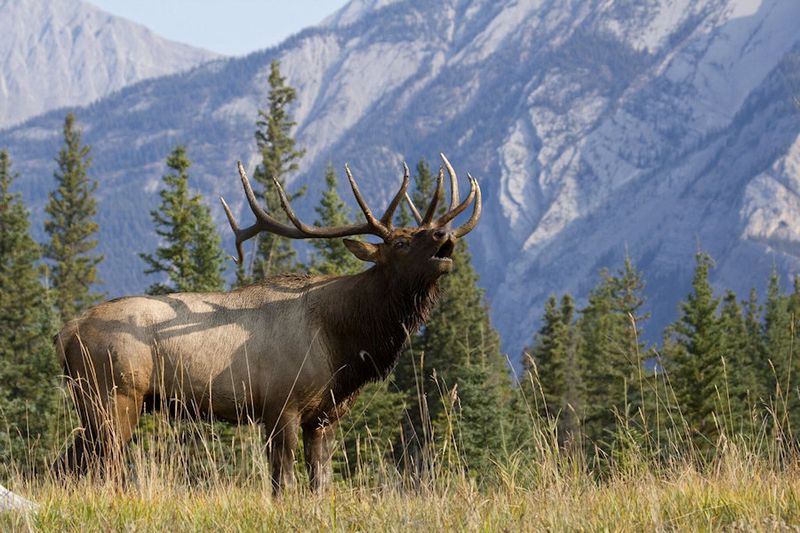
Rocky Mountain elk are majestic creatures, known for their impressive antlers and bugling calls during mating season. These social animals travel in herds, grazing on grasses and plants in alpine meadows.
Elk migrate to lower elevations in winter, avoiding deep snow and harsh winds. Their keen senses help them detect predators, ensuring their survival in the wild. Elk are a vital part of the mountain ecosystem, their grazing patterns influencing plant growth.
The sight of a herd of elk is a quintessential image of the Rocky Mountains’ natural beauty.
Gray Jay
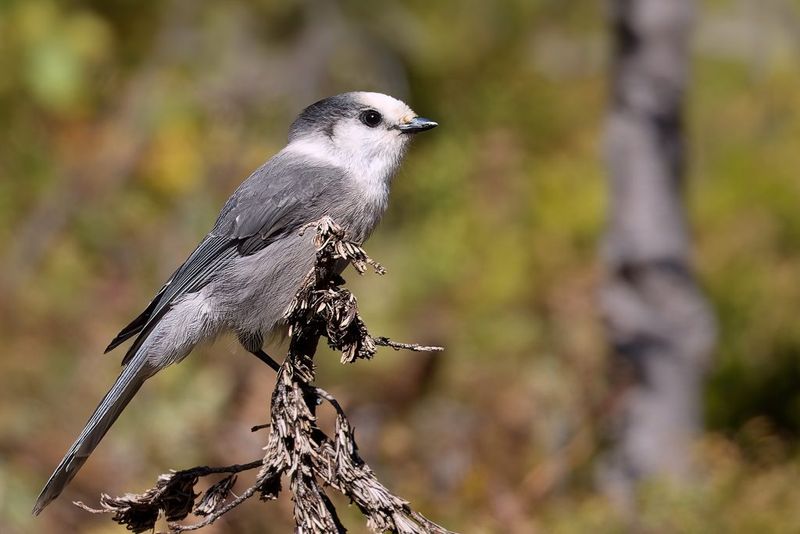
The gray jay, known for its bold and curious nature, thrives in the cold forests of the Rockies. Often called “camp robbers,” these birds are notorious for their habit of stealing food from unwary hikers.
Gray jays have a varied diet, feeding on insects, berries, and even carrion. Their ability to store food for the harsh winter months is remarkable.
With their friendly demeanor and adaptability, gray jays are a beloved symbol of the mountain wilderness, bringing a touch of liveliness to the snowy landscapes of the Rockies.
Northern Goshawk
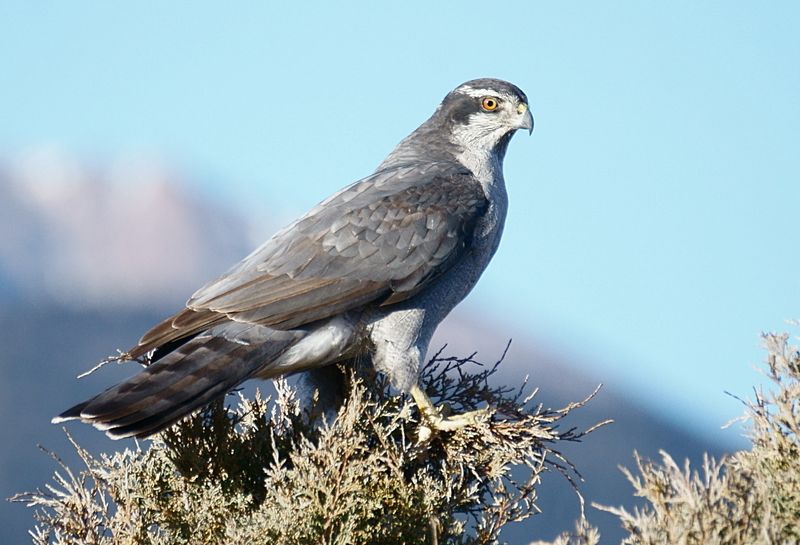
The northern goshawk is a fierce predator of the Rockies, known for its speed and agility. These birds of prey have sharp talons and keen eyesight, allowing them to hunt with precision.
Often found in dense forests, goshawks are elusive and difficult to spot. They prey on small mammals and birds, playing a crucial role in maintaining the ecological balance.
The northern goshawk’s presence is a testament to the healthy, thriving forests of the Rockies, showcasing the intricate web of life in this rugged terrain.
Pine Marten

Pine martens are agile and playful inhabitants of the Rockies’ forests. With their slender bodies and bushy tails, these creatures move effortlessly through the trees, hunting for small rodents and birds.
Pine martens have a warm, thick coat that protects them from the cold. They are solitary and nocturnal, making them a rare sight for hikers. Their presence in the Rockies is an indicator of rich biodiversity, as they require healthy forest ecosystems to thrive.
Pine martens add to the mystique and charm of the mountain wilderness.
American Dipper
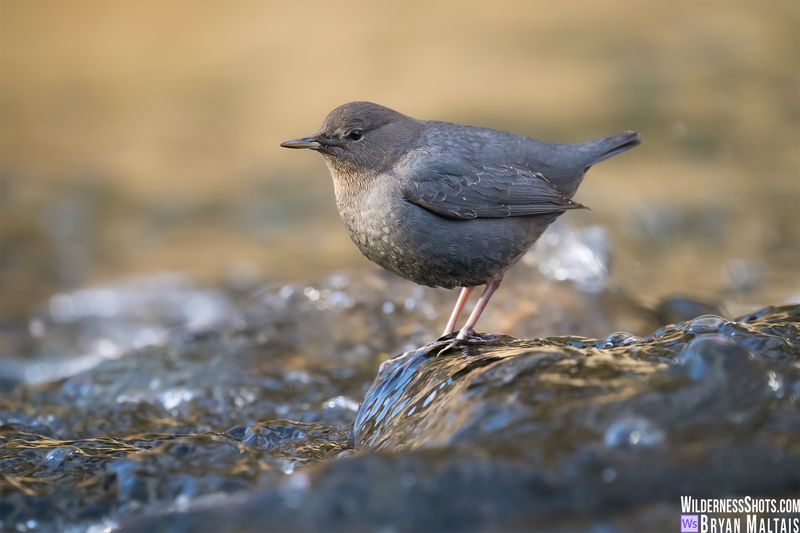
Meet the American Dipper, the aquatic songbird known for its incredible diving prowess. Found near swift alpine streams, this bird’s slate-gray plumage allows it to blend with the rocky riverbanks. Its enchanting behavior of bobbing up and down is both captivating and practical, as it scans for aquatic insects.
The dipper’s unique ability to ‘fly’ underwater is a remarkable adaptation, enabling it to thrive in turbulent waters where few others dare to venture. Watching one dip and dive beneath the surface is a testament to nature’s ingenuity.
Fun fact: The American Dipper’s eyelids flash white when it blinks, adding a distinctive flair as it flits along the stream.

